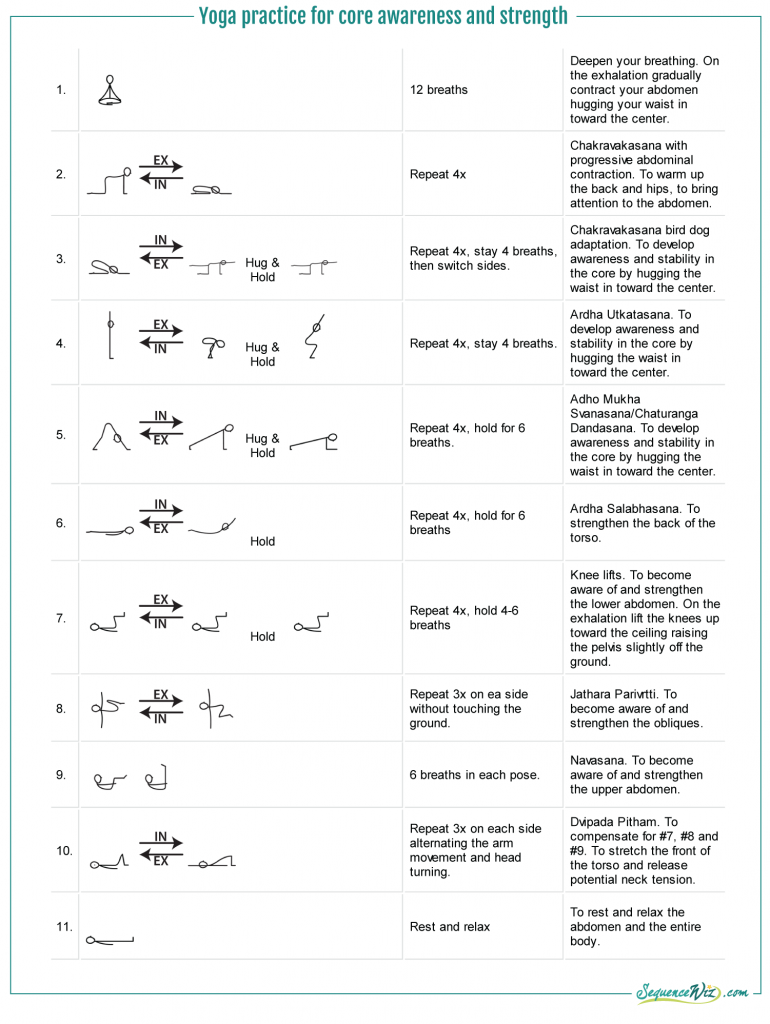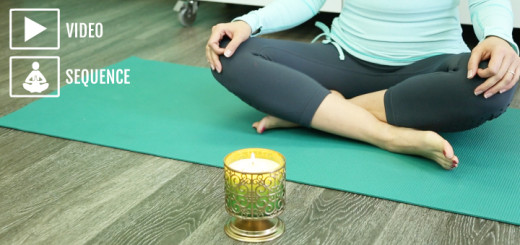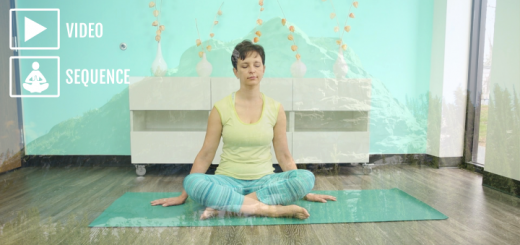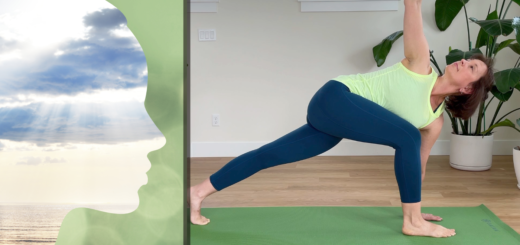Yoga practice for core awareness and strength
12Few years ago when I was traveling around New Zealand, I signed up for a white water rafting trip. Before letting us into the water the instructor said: “Make sure that you move from your center!” Once I got into the kayak and began to maneuver myself around the foaming rapids it became immediately clear that paddling from the core made all the difference. My stroke became much more powerful and I was able to direct my kayak where I wanted it to go (more or less), instead of being dragged around.
So what does it mean – to move from the center? It basically means initiating the movement by engaging your core musculature, which makes that movement much more powerful, whether you maneuver a kayak, hit a golf ball, paint your house or whatever. Moving from the center helps to generate force winding your body like a tight spring and then unwinding it to unleash the power. It also helps protect other joints (especially the shoulders) from overuse.
In the yoga practice we are not so concerned about throwing things as far as we can or fighting the elements. Here moving from the center takes on a different meaning. In yoga we initiate the movement from the center to make it potent and to link separate body parts into an integrated whole. Since centering in general is a huge part of a yoga practice, it is only natural that we try to manifest it on different levels of the practice. We do it by focusing our attention, becoming aware of the breath in the center of the body, using the breath to animate the spine and then mobilize the spine by initiating every movement from the center. When you throw a pebble into the water you can see the rings expand from the center outwards. In the same way in our yoga practice we want to begin the movement in the center and then expand the ripples of the movement, so to speak, out into the body periphery.
The following short yoga practice will help you become aware of the center of your body and teach you how to move from that center. It will also help you strengthen your core because ultimately core strength is not so much about individual muscle development, but more about all the parts working in unison to create stability and integration for whatever daily tasks you want to do.
Join Sequence Wiz to customize this practice to your liking. Choose your poses, enter the instructions and you are done! See it in action >






















Excellent as usual Olga, i was thinking about abdominal strength over the last few days so very timely. I continue to love your work. Thank you. Barbara, Australia
Thank you Barbara!
When are you coming again to New Zealand? Love to attend one of your workshops if you ever do one over here…Shame I missed you last time..;)
Hi Julia! I wasn’t teaching when i was in New Zealand – I went just for fun and enjoyed your beautiful country immensely! Someday I hope to make it back – I will keep you posted!
This is great. Will the sequence be available in shared sequences shortly as I’d love to use this in class, having worked on it to make it suitable for my group?
Hi Helen – happy to hear you like it! Yes, it is now available on Shared Sequences; it’s the first one on top. Have fun playing with it!
Hi Olga, are you able to explain when to use the gradual contraction as opposed to the corset contraction? Thanks for your excellent work. Barbara
Hi Barbara! I would say that usually I use the “corset contraction” when I instruct axial extension poses (positions when the trunk is neutral, not flexed forward, bent back, sideways or twisted, for example in a Birddog pose). But it all depends on what we are working on. So I don’t think there are any hard rules about it, just whatever you choose to bring your students’ attention to!
Love your work.
Olga, you are the best yoga teacher there ever is/was. I am obsessed with the body-map you have and use it to find a practice daily. I share some of your sequences with classes I teach in several cities of Colorado. I could not thank you enough. Keep up the great, creative work. Thank you.
Hi Gina! Thank you for your kind words about my teachings; it’s wonderful to hear! Sounds like we approach yoga in similar ways – it’s awesome to find a kindred spirit! I hope that you continue to find my writing useful 🙂
Hi Olga
Thank you for all your infomation, fantastic website, guidance and support. As I have said many times It never ceases to amaze me how helpful your website is and you as a teacher. I love your work!
I have been working with your corset description in your core stability class and I have taught this one recently. Am I right in thinking that the corset is the same as progressive abdominal contraction. That is zip up….. bring the navel to the spine, hug the waist in and contract the back muscles?
Thanks Olga.
Kind regards
Deb, Sydney Australia